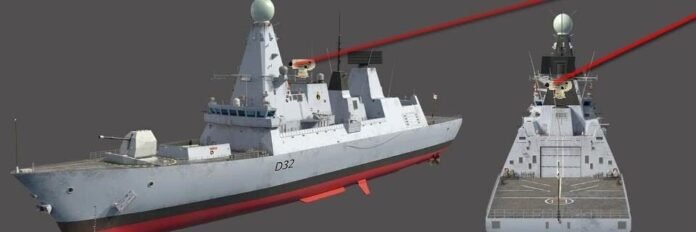Laser weapons to arm Royal Navy ships as UK ramps up defence against rising global threats
The United Kingdom is preparing to equip four Royal Navy warships with a terrifying new weapon: DragonFire, a laser-directed energy system capable of shooting down drones at lightning speed and for mere pennies compared to conventional arms.
The announcement came today as the Chancellor delivered the Spring Statement, unveiling a modest but symbolic defence funding increase—a £2.2 billion “downpayment” towards the government’s goal of spending 2.5% of GDP on defence by 2027. While experts warn it’s far from enough in the face of intensifying global threats and dwindling confidence in the US commitment to NATO, this funding signals a slow but visible pivot towards modern warfare readiness.
A key portion of the new money will accelerate the rollout of DragonFire, previously planned for one vessel but now scheduled to be deployed on four warships by 2027. Though the Ministry of Defence hasn’t confirmed the exact platforms, sources suggest the Type 45 destroyers—with their upgraded power systems—and potentially the Type 26 frigates are the leading candidates.
DragonFire represents a seismic shift in weapons technology. Unlike traditional missile or gun systems, this directed energy weapon (DEW) never runs out of ammunition in the conventional sense. As long as the ship can generate power, it can keep firing. A single laser shot costs only tens of pounds—starkly contrasting with the thousands spent on each artillery shell or the millions required for advanced missiles.
This cost-efficiency is more than economic—it’s strategic. Following intense missile and drone activity in the Red Sea last year, the military has grown increasingly aware of the need for rapid, limitless response systems. DragonFire’s instant targeting capabilities make it ideal for intercepting high-speed and erratically manoeuvring threats without the delay of calculating missile intercept trajectories or enduring last-second guidance corrections.
With a 50-kilowatt class output, the DragonFire can destroy incoming drones and potentially disable enemy sensors or electronics—all without a visible explosion. The silent, unseen nature of the weapon makes it even more fearsome.
Beyond laser tech, some of the new defence money will also go toward a chronic but less headline-grabbing issue: accommodation for service personnel and their families. Amid a worsening retention crisis, improving living conditions is a crucial step to stem the tide of discontent within the armed forces.
Though the figures announced are hardly revolutionary in scale, the intent behind them is becoming clearer. Britain is inching towards recognising and responding to the shifting nature of global security—where drones, hypersonic weapons, and power projection define modern conflict. The DragonFire programme stands as both a symbol of innovation and a stark warning of the technological arms race now underway.
By 2027, the UK will have warships prowling the seas with silent laser cannons capable of bringing down enemy threats in seconds. As geopolitical tensions simmer across Europe, the Middle East, and Asia, the timing could prove critical.
The age of laser warfare isn’t coming—it’s already here. And Britain intends to be ready.
